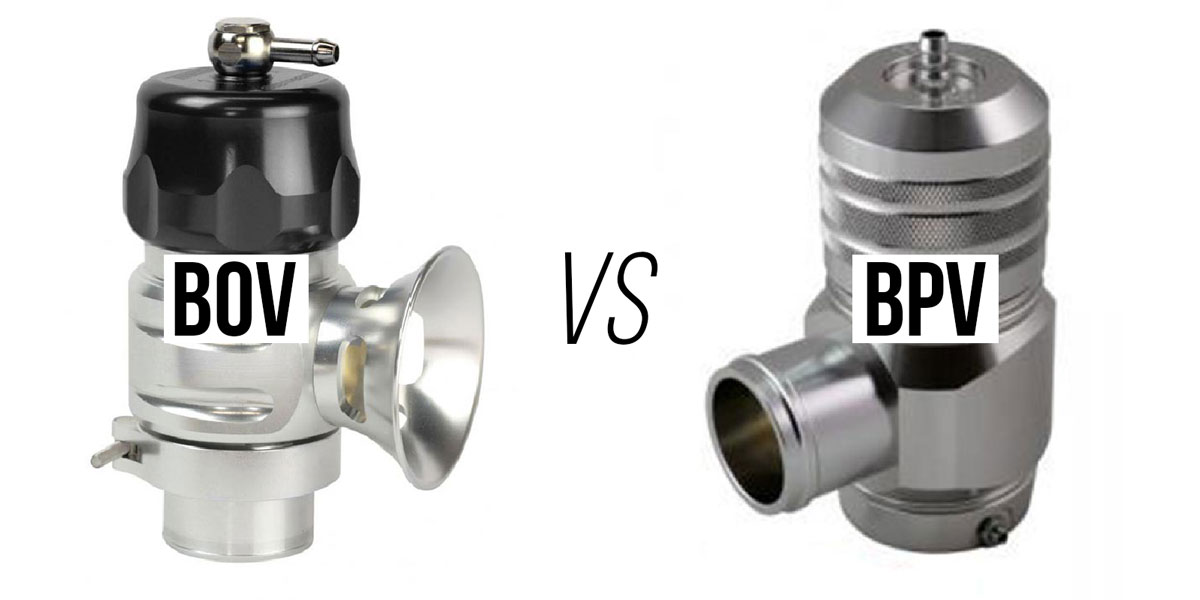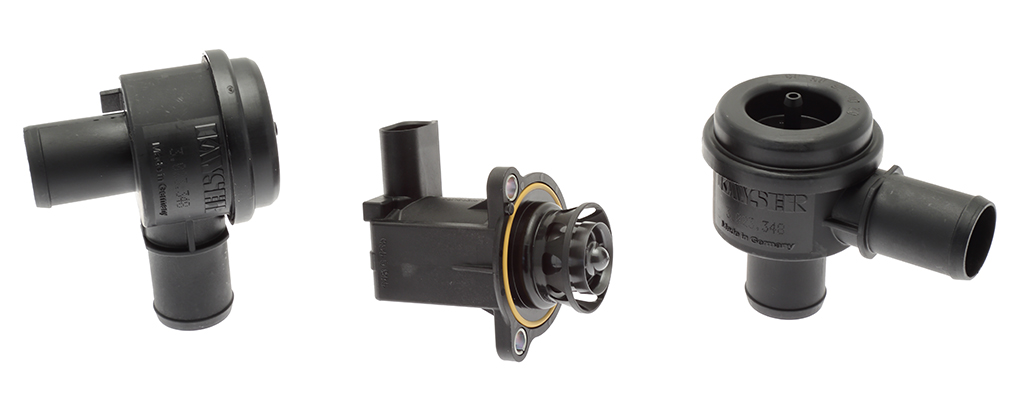As an Amazon Associate, I earn from qualifying purchases at no extra cost to you.
Understanding Diverter Valve Versus Blow-Off Valve?
Understanding diverter valves redirect excess boost pressure back into the intake system, while blow-off valves release excess pressure into the atmosphere. Diverter valves recirculate, blow-off valves vent.
Diverter valves prevent stalling in turbo engines, while blow-off valves enhance turbo performance and longevity. Both play crucial roles in maintaining optimal turbo function and car performance. Whether you need a diverter valve or a blow-off valve depends on your specific vehicle and performance goals.
Understanding the differences between the two valve types will help you make an informed decision for your car’s turbo system. Let’s delve deeper into the functionality of diverter valves and blow-off valves to determine which is best suited for your vehicle’s needs.

Credit: www.vividracing.com
What Is A Diverter Valve?
A diverter valve is a crucial component of a turbocharged engine’s forced induction system. It is designed to regulate the boost pressure and is commonly used in vehicles equipped with turbochargers. The primary function of a diverter valve is to divert the excess boost pressure when the throttle is closed, preventing damage to the turbocharger and ensuring efficient performance.
How Does A Diverter Valve Work?
When the throttle is closed in a turbocharged engine, the boost pressure that has built up needs to be released to prevent compressor surge. This is where the diverter valve comes into play. It opens to divert the pressurized air back into the intake system, rather than allowing it to reverse flow and cause damage to the turbocharger. The diverter valve operates using a vacuum or boost pressure signal to actuate, ensuring seamless performance during gear shifts or rapid throttle changes.
Benefits Of Using A Diverter Valve
- Prevents compressor surge and turbocharger damage
- Enhances engine reliability and longevity
- Improves throttle response and drivability
- Reduces stress on the turbocharger and associated components
- Ensures consistent boost pressure regulation for optimum performance
What Is A Blow-off Valve?
What is a Blow-Off Valve?
A Blow-Off Valve is a critical component in a turbocharged engine that releases built-up pressure when the throttle is closed.
How Does A Blow-off Valve Work?
When the throttle is closed, the Blow-Off Valve releases excess boost pressure, preventing damage to the turbocharger.
Benefits Of Using A Blow-off Valve
- Prevents turbocharger damage
- Improves engine performance
- Reduces turbo lag
Key Differences Between Diverter Valve And Blow-off Valve
Understanding the nuances between a diverter valve and a blow-off valve is crucial for maximizing the performance of your engine. Each of these components serves a distinct purpose, impacting functionality, sound, performance, and compatibility in unique ways. Let’s delve into the key differences between diverter valves and blow-off valves:
Functionality
A diverter valve recirculates excess boost pressure back into the intake system, ensuring smooth operation. On the other hand, a blow-off valve releases excess pressure into the atmosphere, producing the distinctive sound enthusiasts love.
Sound
A diverter valve operates silently, redirecting excess pressure without creating noticeable noise. In contrast, a blow-off valve produces a satisfying ‘whoosh’ sound when releasing pressure, enhancing the overall driving experience.
Performance
Diverter valves excel in maintaining consistent boost levels, ideal for precision driving and tuned setups. Blow-off valves offer quicker response times by venting pressure instantly, which can enhance throttle response and acceleration.
Compatibility
Diverter valves are a preferred choice for vehicles with mass airflow sensors, as they prevent stalling and maintain optimal air-to-fuel ratios. Blow-off valves are suitable for applications where sound and rapid pressure release are prioritized, such as high-performance turbo setups.

Credit: blog.moddedeuros.com
Choosing The Right Option For Your Vehicle
When it comes to enhancing the performance of your vehicle, understanding the crucial difference between a diverter valve and a blow-off valve is essential. Choosing the right option is vital to optimizing your vehicle’s turbocharged system and achieving the ideal balance between performance and longevity.
Considerations For Selecting A Diverter Valve
When considering a diverter valve for your vehicle, several factors come into play. Firstly, the material and construction of the valve are critical. Ensure that the diverter valve is built with durable materials such as aluminum or high-grade plastic to withstand the high pressures and temperatures generated by the turbo system.
Next, the valve’s ability to maintain boost pressure during gear shifts and flutter prevention are important aspects to consider. Look for a diverter valve that offers efficient control of boost pressure without causing flutter, ultimately preserving your turbocharger’s longevity.
Considerations For Selecting A Blow-off Valve
When selecting a blow-off valve, it’s crucial to focus on the performance and sound characteristics. The blow-off valve should efficiently release the excess boost pressure, preventing compressor surge and protecting the turbocharger. Additionally, consider the audible sound produced by the blow-off valve, ensuring it aligns with your preferences and local regulations.
Moreover, the construction and durability of the blow-off valve play a critical role. Opt for a valve crafted from high-quality materials to ensure reliability and longevity under high-pressure conditions.
Factors To Help You Decide
Ultimately, the decision between a diverter valve and a blow-off valve should be based on your vehicle’s specific needs and your desired driving experience. Consider factors such as your vehicle’s performance goals, driving habits, and the existing turbocharged system. Additionally, consulting with experienced mechanics and enthusiasts can provide valuable insights to help you make an informed decision.
Installation And Maintenance
Installing and maintaining your diverter valve or blow-off valve is crucial for the optimal performance and longevity of your vehicle. Let’s take a closer look at the installation and maintenance processes for both valves.
Diverter Valve Installation And Maintenance
The diverter valve is responsible for redirecting excess boost pressure back into the intake system, rather than releasing it into the atmosphere like a blow-off valve. To ensure proper installation and maintenance:
- Begin by locating your stock diverter valve, typically found near the turbocharger or intercooler.
- Disconnect any vacuum lines connected to the stock valve and remove it from the vehicle.
- Install the aftermarket diverter valve following the manufacturer’s instructions, making sure the connections are secure.
- Check for any leaks or loose fittings and tighten them if necessary.
- Regularly inspect the diverter valve for signs of wear or damage, such as cracks or leaks.
- Clean the valve or replace any worn-out parts as needed.
Blow-off Valve Installation And Maintenance
A blow-off valve is essential for releasing excess boost pressure into the atmosphere, creating that distinctive “whoosh” sound. To properly install and maintain your blow-off valve:
- Locate the stock blow-off valve, usually positioned between the turbocharger and the throttle body.
- Disconnect any vacuum lines and remove the stock valve from the vehicle.
- Install the aftermarket blow-off valve according to the manufacturer’s instructions, ensuring a secure connection.
- Inspect the valve for any leaks or loose fittings and tighten them if necessary.
- Regularly check for any signs of wear or damage, such as torn diaphragms or leaking seals.
- Thoroughly clean the blow-off valve or replace any faulty components as needed.
By following these installation and maintenance guidelines for both diverter valves and blow-off valves, you can enhance your vehicle’s performance and prolong the lifespan of these essential components.

Credit: blog.europaparts.com
Common Myths And Misconceptions
When it comes to upgrading the performance of your car, understanding the difference between a diverter valve and a blow-off valve is crucial. However, there are several common myths and misconceptions surrounding these two components. In this section, we will debunk these misconceptions and shed light on the truth.
Myth: Diverter Valve Is Always The Better Choice
One of the most prevalent myths about diverter valves and blow-off valves is that the diverter valve is always the superior option. While it is true that a diverter valve redirects excess boost pressure back into the intake, allowing it to be recirculated, this doesn’t necessarily mean it is always the better choice.
Blow-off valves, on the other hand, release the excess boost pressure into the atmosphere, creating the distinct “whoosh” sound. Contrary to popular belief, blow-off valves can be a viable option, especially if you are chasing a more aggressive and performance-oriented driving experience.
So, the myth that the diverter valve is always the better choice is just that—a myth. The decision between the two ultimately depends on your personal preference and the goals you have for your car’s performance.
Myth: Blow-off Valve Causes Damage To The Engine
Another common misconception that needs to be addressed is the myth that blow-off valves cause damage to the engine. Many people believe that the release of excess pressure into the atmosphere can lead to a dangerous air-to-fuel mixture, resulting in engine damage.
However, this is not entirely true. Modern blow-off valve designs, especially those from reputable manufacturers, are engineered to account for this concern. The valves are designed to maintain the proper air-to-fuel ratio, preventing any harm to the engine.
| Myth | Truth |
|---|---|
| Blow-off valves always cause engine damage | Modern blow-off valves are engineered to prevent any harm to the engine |
| Diverter valves are always the better choice | The choice between diverter and blow-off valves depends on personal preference and performance goals |
In conclusion, it is important to separate fact from fiction when it comes to understanding diverter valves and blow-off valves. Don’t fall prey to the myths and misconceptions surrounding these components. Instead, make an informed decision based on your specific needs and goals.
Modifications And Upgrades
When it comes to improving the performance and efficiency of your car, modifications and upgrades play a crucial role. Understanding the diverter valve versus blow-off valve and knowing how to upgrade them can greatly impact your vehicle’s performance. Below, we’ll explore the process of upgrading both the diverter valve and the blow-off valve and how these modifications can enhance your car’s overall performance.
Upgrading The Diverter Valve
Upgrading the diverter valve can significantly improve the responsiveness of your turbocharged engine. A high-quality aftermarket diverter valve can effectively handle increased boost pressures, reducing the risk of leaks and ensuring optimal performance. When considering an upgrade, it’s important to choose a diverter valve that is specifically designed for your car’s make and model to ensure a perfect fit and compatibility with the existing components.
Opting for a performance-oriented diverter valve with sturdier construction and improved sealing capabilities can enhance the overall reliability of the turbo system. Additionally, a high-performance diverter valve can help maintain consistent boost pressure, resulting in improved throttle response and engine performance.
Upgrading The Blow-off Valve
Upgrading the blow-off valve is another option to consider for enhancing your car’s performance. By upgrading to a high-quality aftermarket blow-off valve, you can effectively manage excess boost pressure, reducing the risk of compressor surge and ensuring smooth and reliable turbocharger operation.
When selecting a blow-off valve upgrade, look for features such as robust construction, adjustable spring tension, and a design that facilitates quick response and consistent operation. A performance-oriented blow-off valve can contribute to improved turbocharger reliability and overall engine performance, especially during rapid throttle transitions and gear changes.
Performance Modifications
In addition to individual component upgrades, considering performance modifications for the entire turbo system can further enhance the overall efficiency and power delivery of your vehicle. This may include optimizing the intercooler, upgrading the intake system, and fine-tuning the engine management system to accommodate the enhanced performance of the diverter valve and blow-off valve upgrades.
By ensuring that the entire turbo system is well-integrated and optimized, you can maximize the benefits of the diverter valve and blow-off valve upgrades, resulting in a more responsive, powerful, and enjoyable driving experience.
Conclusion
In a nutshell, understanding the differences between a diverter valve and a blow-off valve is crucial. Each component serves a distinct purpose in managing boost pressure. By recognizing their functions, car enthusiasts and mechanics can make informed decisions about enhancing vehicle performance.
Embracing this knowledge can shape an effective approach to turbocharged engine optimization.


